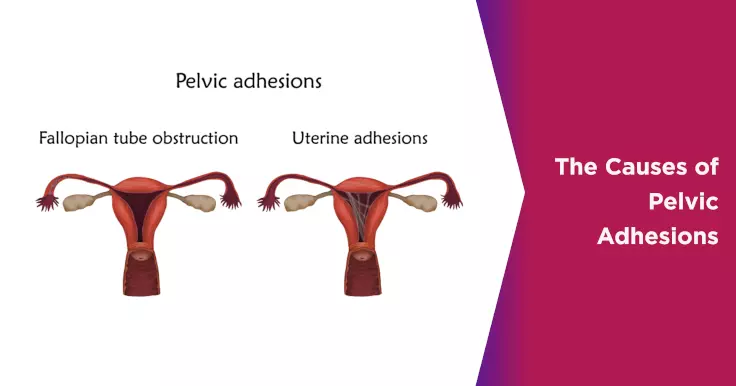Causes of Pelvic Adhesions: Impact on Reproductive Health

Scar tissue resulting from a surgery, injury or infection in the pelvic area can result in internal scarring. As the body heals, these scars can turn into bands of tough tissue that bind the internal organs together. This is referred to as an adhesion. Pelvic adhesions can affect the bowels, bladder and female reproductive organs such as the ovaries and fallopian tubes.
In most cases, pelvic adhesions are asymptomatic but they may cause a number of complications such as infertility, bowel obstruction and a set of symptoms known as an adhesion-related disorder (ARD). Pelvic Adhesions are a common issue and up to 93% of people who undergo an abdominal surgery, suffer from it.
Causes of Pelvic Adhesions
Pelvic adhesions rarely develop without an apparent cause. Some of the common causes of these adhesions include:
Abdominal Surgery
This is the most common cause of pelvic adhesions. Pelvic adhesions caused by surgery may develop immediately after the procedure or within 5 years of having the procedure. Open surgery has a higher risk of resulting in pelvic adhesions as compared to laparoscopic surgeries. People who have multiple surgeries have a high risk of developing pelvic adhesions. Some of the other factors related to surgery that could increase the risk of such adhesions are:
- Cuts in the internal organs
- The way internal organs are handled
- Drying of the internal tissues and organs
- Blood clots or blood that is not rinsed away during surgery
- Foreign materials such as gauze, surgical gloves, or stitches that come in contact with internal organs
Certain surgical techniques such as using moistened swabs and latex and starch free gloves can help minimize the risks of developing pelvic adhesions.
Inflammation
Inflammation in the pelvic area can also result in pelvic adhesions. This may be caused by a ruptured appendix, abdominal or gynaecological infections and radiation treatment. It is typically caused by a bacterial infection that begins in the cervix. STDs such as Chlamydia and Gonorrhea are amongst the most common causes of pelvic inflammatory diseases. The inflammation caused by this disease turns into scar tissue as the condition worsens. This scar tissue, in turn, is converted to adhesions if not addressed in time.
Practising safe sex can reduce the risk of catching an STD and in turn reduce the risk of pelvic inflammatory disease.
Endometriosis
Endometriosis refers to the growth of the endometrium tissues outside the uterus. This can result in the formation of scar tissue around the fallopian tubes and the ovaries.
 Infertility Counselling
Infertility Counselling Female Infertility Treatment
Female Infertility Treatment Andrology Treatment
Andrology Treatment Fertility Enhancing Surgeries - Female
Fertility Enhancing Surgeries - Female Fertility Enhancing Surgeries - Male
Fertility Enhancing Surgeries - Male Endoscopy Treatment
Endoscopy Treatment IUI Treatment
IUI Treatment IVF Treatment
IVF Treatment ICSI Treatment
ICSI Treatment Advanced IVF Solutions
Advanced IVF Solutions Embryology
Embryology Vitrification Egg, Embryo, Sperm Freezing
Vitrification Egg, Embryo, Sperm Freezing Preimplantation Genetic Testing (PGT)
Preimplantation Genetic Testing (PGT) Donation Program Embryo / Egg / Sperm
Donation Program Embryo / Egg / Sperm Self-cycleTM IVF
Self-cycleTM IVF

 Self-cycleTM IVF
Self-cycleTM IVF








